Tennis isn’t just a game of skill, endurance, and mental fortitude—it’s also a game with one of the most curious and quirky vocabularies in all of sport. From calling zero “love”, to keeping score in an irregular 15–30–40 progression, to declaring victory with the iconic phrase game, set, match, the language of tennis is as unique as its traditions. But have you ever wondered why tennis uses such strange words and phrases? Or where they come from?
Understanding tennis scoring can be confusing for newcomers, and even lifelong fans might not know the origins of the terms they hear every day. Why do we talk about breaking a serve? Why is a shutout called a bagel? And what exactly is a tiebreak, beyond a dramatic end-of-set decider?
In this article, we’ll take a deep dive into the history and meaning behind tennis scoring terms, tracing their roots from medieval France to modern-day slang. Whether you're a casual fan or a tennis nerd, this guide will help you decode the strange, fascinating world of tennis language—and you might just impress your next hitting partner with some court-side trivia.
So, next time you hear advantage, deuce, or love-40, you’ll know there’s more to those words than meets the ear. Let’s serve up some etymological winners.
1. Why Is Zero Called Love in Tennis?
Among the many strange quirks of tennis scoring, few are as iconic—or as puzzling—as the use of the word love to represent zero. Ask a beginner what “15-love” means, and you’re likely to see some raised eyebrows. But why does tennis use love for zero? The answer, as it turns out, is rooted in both language and lore.
The most widely accepted theory traces the term back to French. In early versions of the game, French players reportedly used the word l’œuf—which means “the egg”—to refer to the number zero, because of its round shape resembling a zero on the scoreboard. Over time, English-speaking players borrowed the term, but instead of adopting l’œuf directly, they phonetically transformed it into love—an easier word to pronounce and remember.
There’s also a romantic (though less linguistically supported) explanation: some claim that love symbolizes “playing for the love of the game,” suggesting that a player with zero points is still competing with passion, even if the scoreboard doesn’t reflect success. While charming, this interpretation is largely seen as a back-formation or folk etymology rather than the true origin.
Interestingly, other sports also use food-based metaphors for zero. In cricket, for example, a score of zero is called a duck, short for duck’s egg, again referencing the egg-shaped zero. It seems there’s a long-standing human habit of comparing scoreless efforts to breakfast items.
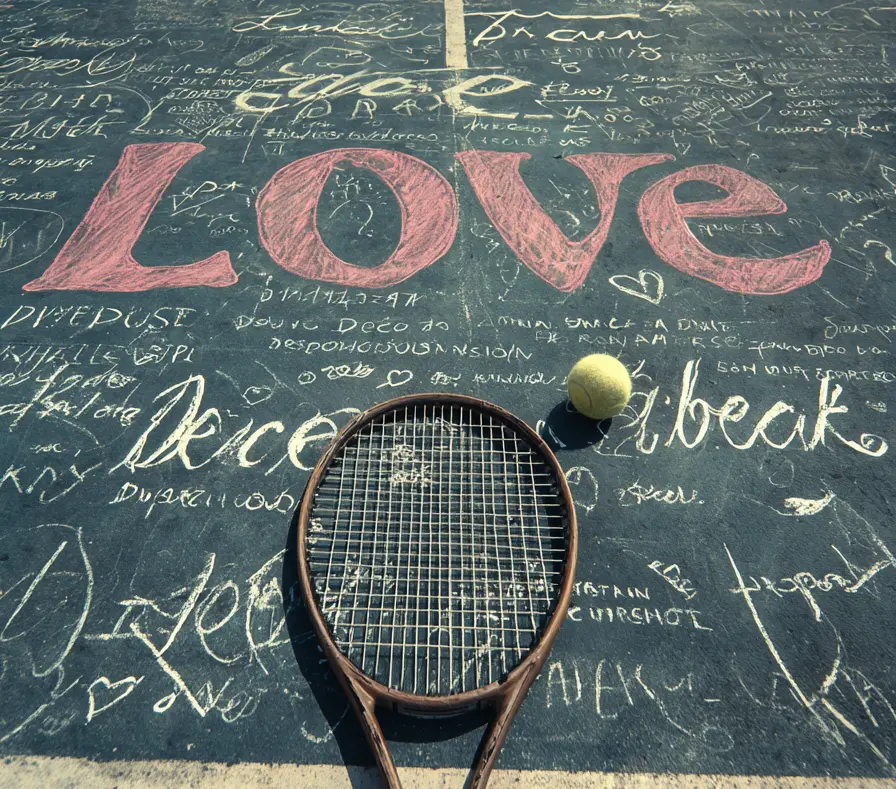
So the next time you hear “40-love,” remember: you’re not hearing a term of endearment. You’re hearing a centuries-old linguistic evolution that started with an egg in France and ended up as one of tennis’s most famous—and misunderstood—phrases.
2. The Mystery of 15, 30, 40: Why Not 45?
If you're trying to learn how tennis scoring works, one of the first questions that comes up is: why does the score go 15, 30, 40? Wouldn't 15, 30, 45 make more sense?
This unusual numerical progression has baffled fans for generations, and while there’s no universally agreed-upon answer, several compelling theories exist. The most popular explanation ties back to the use of clocks and medieval scoring systems. In early versions of the game—possibly influenced by jeu de paume, a French precursor to modern tennis—the points may have been tracked using a clock face, with 15, 30, and 45 representing the quarter-hour marks. But at some point, the 45 was allegedly shortened to 40, perhaps for the sake of simplicity or to make calling the score faster during matches.

Another theory suggests that the 40-point mark allowed space for the concept of advantage. In a deuce game (when both players reach 40), the next point doesn’t win the game outright—it creates an advantage scenario. Had the score reached 45, this extra step might have required clunkier math. With 40, it's easier to add an additional “step” before the game ends.
There’s also the possibility that early scorers simply rounded down 45 to 40 over time, either by habit or convenience. After all, tennis has never been obsessed with numerical logic—its charm lies in its quirks.
So while no one can say with certainty why we don’t say “15, 30, 45,” the 15–30–40 progression remains one of the most recognizable rhythms in sports—and a legacy of the game’s European origins and evolving culture.
3. What Does Deuce Mean in Tennis?
Among the most frequent tennis scoring terms that confuse new players, deuce holds a special place. What exactly does deuce mean in tennis— and why do we use it?
The answer, once again, lies in linguistic heritage, specifically from the French expression à deux le jeu, which roughly translates to “the game is at two . In other words, a player needs two consecutive points to win from this stage. Over time, the phrase was shortened and anglicized to simply deuce, keeping the focus on the two-point requirement to secure the game.
In practical terms, deuce occurs when both players reach a score of 40–40. From there, one player must win two points in a row—first to gain advantage, and then to win the game. If the opponent wins the next point, the score returns to deuce, and the cycle continues until someone breaks the deadlock.

What makes deuce particularly interesting is how it blends linguistic borrowing and game mechanics. The term doesn’t mean “tie” or “draw” in a literal sense, but it reflects a threshold moment in the game, when both players are equally poised to win, yet must pass through a two-step gate.
In club-level tennis, you might also hear variations or slang for deuce—from playful nicknames like “the eternal loop” to casual “40-all” shorthand. But no matter what you call it, deuce marks a critical turning point in any tightly contested game.
So next time you’re stuck in a seemingly endless deuce battle, remember: you’re reliving a centuries-old scoring ritual that still thrives today—and one that perfectly embodies the tension, strategy, and drama of tennis.
4. Game, Set, Match. Anatomy of Victory
If you've ever watched professional tennis, you've likely heard the phrase: “Game, set, match [Player Name]!” But what exactly does each part of that sequence mean? Understanding the structure behind game, set, and match is essential to grasp how tennis is won—and how its layered scoring system builds drama over time.
Let’s break it down.
A game is the smallest scoring unit in tennis. To win a game, a player must win at least four points and lead by two (hence the deuce and advantage scenarios when necessary). Winning a game contributes to winning a set.
A set is a collection of games. In most professional formats, a player must win six games with at least a two-game lead to take a set. If the score reaches 6–6, a tiebreak is usually played to decide the set winner (we’ll explore that later). The structure of sets can vary slightly depending on the tournament, with formats like best-of-three or best-of-five sets being standard.
Finally, a match refers to the entire contest—comprising multiple sets, depending on the rules of the competition. When the chair umpire calls “game, set, match,” they’re declaring that all necessary components have been won by one player or team.
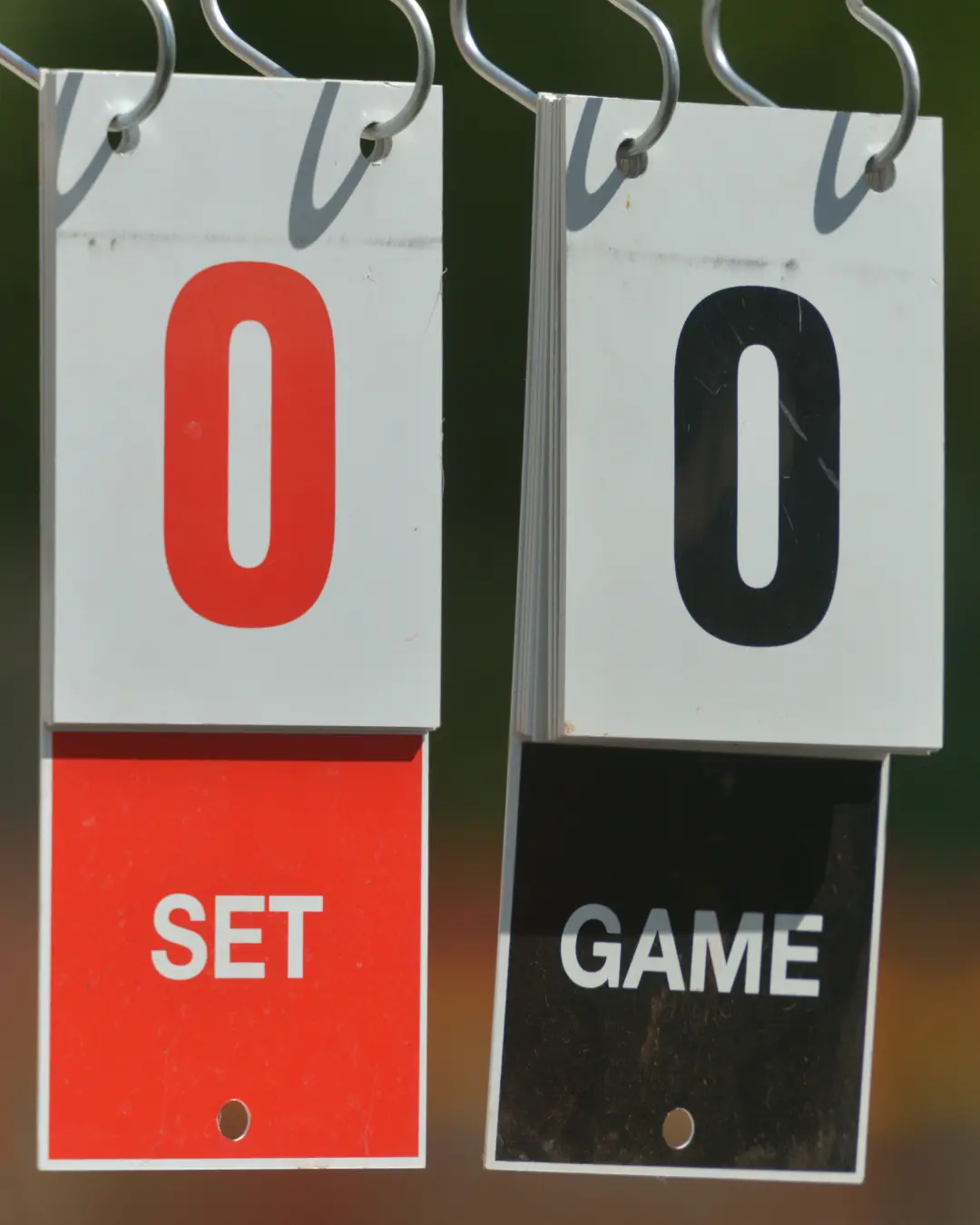
But where do these terms come from?
- Game comes from the Old English gamen, meaning joy or amusement. It entered sport lexicon early and straightforwardly.
- Set, in this context, likely refers to something being “set aside” or completed, indicating a unit of progress within the match.
- Match has French origins (mache, mesche), meaning a contest or rivalry—fitting for a sport rooted in historic courtly duels.
Understanding the meaning behind game, set, match helps clarify not only how players win in tennis, but also how the sport builds tension across multiple layers of competition. From the smallest rally to the final point, tennis unfolds as a structured—but emotionally charged—battle.
5. What Is a Break in Tennis? And a Hold?
In tennis, not all games are created equal. Some carry far more weight—especially when they involve a break of serve. But what does it really mean to break your opponent? And what does it mean to hold your own?
Let’s start with the basics.
When a player is serving and wins the game, that’s called a hold. Holding serve is expected at most levels of the game, especially in men’s tennis where powerful serves make it harder to return. A hold means the server has successfully defended their advantage.
On the other hand, if the receiving player manages to win the game—stopping the server from holding—it’s called a break. This is a crucial moment in any match, as breaking your opponent’s serve gives you a scoring edge without even needing to serve yourself. In tight sets, a single break can make the difference between winning and losing.
The terminology here is metaphorical: the receiver is breaking the server’s rhythm, routine, and dominance. It’s not about breaking rules—it’s about disrupting expectations.
In fact, the battle between holding and breaking serve is one of the sport’s central tactical themes. Big servers aim to dominate on serve and look for occasional break chances. Returners, meanwhile, focus on exploiting second serves and pressuring early in games to force a break.
You might also hear players talk about “breaking back”, when someone who just got broken immediately breaks their opponent in return. This kind of momentum shift can flip an entire match on its head.

And while tactics and psychology play a big part in these exchanges, equipment also matters, especially when it comes to how a racquet handles vibrations at impact. Today, more players are turning to advanced vibration dampeners to improve feel and reduce stress on the arm.
If you're curious about next-generation dampening solutions, check out our shop, we design and manufacture high-performance 3D-printed vibration dampeners based on metamaterial technology, engineered to selectively absorb unwanted frequencies while enhancing connection to the ball.
Discover our high-tech dampeners
So next time you hear commentators say “that was a huge break”, know that it’s not just about winning a game—it’s about seizing control of the set, the rhythm, and sometimes the entire match.
6. Ace! The Winning Serve
Few things in tennis are as satisfying—for both player and fan—as the sound of a clean, unstoppable serve whizzing past the opponent untouched. That’s an ace—one of the most thrilling and definitive shots in the game. But what exactly is an ace in tennis, and where does the term come from?
An ace occurs when a player serves the ball and wins the point outright, without the opponent even managing to touch it with their racket. It’s the ultimate show of dominance on serve, and often a crucial weapon for closing out tight games or sets. The more aces a player hits, the more likely they are to hold serve comfortably.
But why call it an ace?
The term comes from the world of playing cards, where the ace is typically the highest and most valuable card in the deck. In sports, it gradually came to signify a perfect or unbeatable action—the kind of move that leaves no room for response. Tennis adopted the term in the early 20th century, and it stuck because it perfectly captures the feeling of landing a flawless, untouchable serve.
Top pros like John Isner, Ivo Karlović, and Roger Federer are known for racking up hundreds (or even thousands) of aces in a season. Some matches can turn into ace fests, where both players rely heavily on their serves to avoid long rallies.
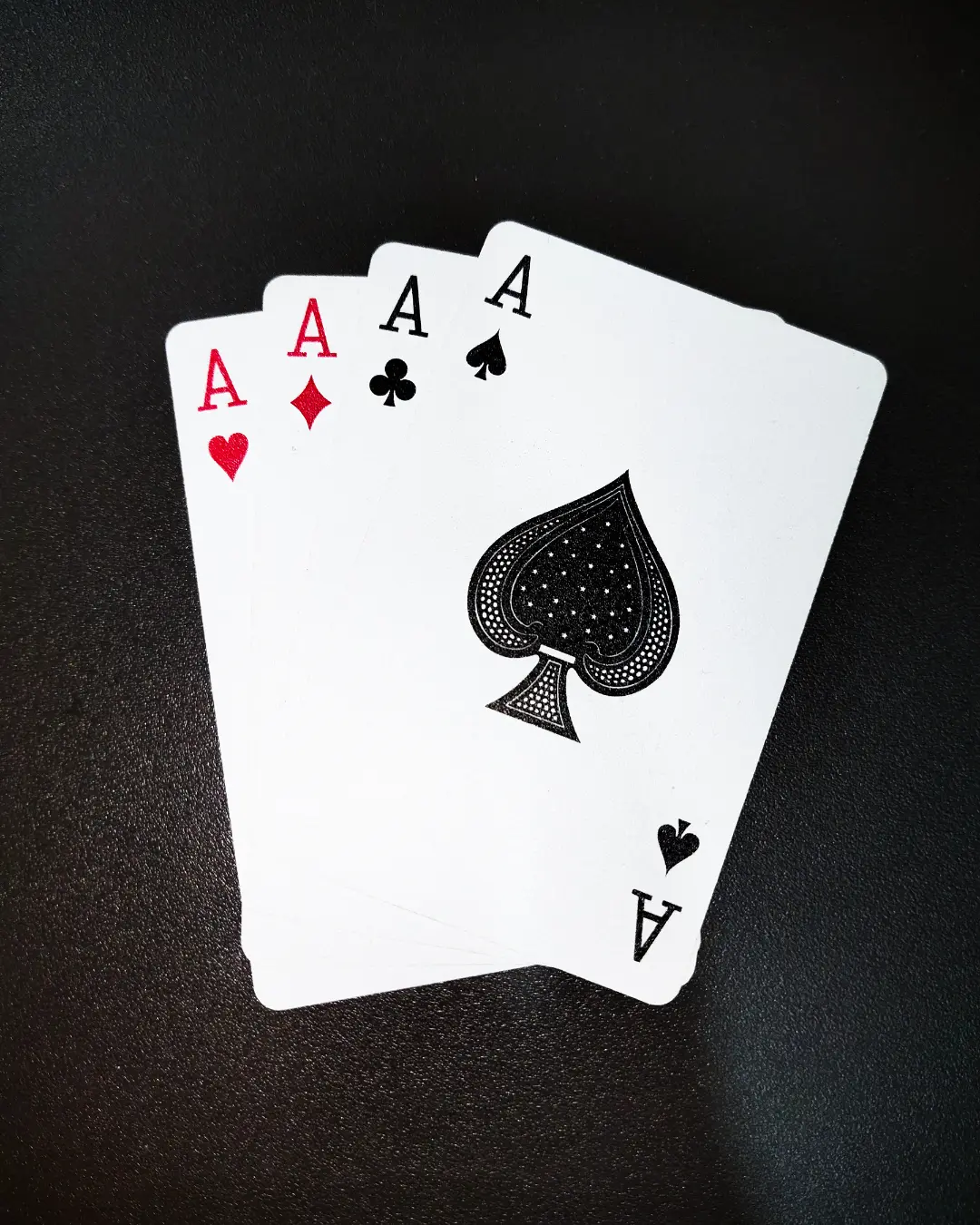
Interestingly, not all aces are about raw power. Placement, disguise, and timing can be just as effective. A perfectly placed slice serve out wide can be just as lethal as a 220 km/h rocket down the T.
In short, the ace is more than just a point—it’s a psychological blow, a declaration of control, and a highlight-worthy moment. Next time you hear “ace!” echo across the court, know that you’re witnessing one of tennis’s most iconic micro-victories.
7. Bagels and Breadsticks: When Food Becomes Scoreboard Slang
Only in tennis can a scoreboard double as a bakery menu. If you’ve heard a commentator say a player “served up a bagel” or escaped with just a breadstick, you’ve entered the world of tennis’s tastiest slang. But what do these terms actually mean—and where did they come from?
A bagel refers to a set won 6–0. The connection? It’s all about shape: the number zero resembles a round bagel. So when a player fails to win even a single game in a set, it’s said that they’ve been “bagelled.” It’s a humorous way of describing what is, in reality, a complete shutout—and often a psychologically crushing experience for the player on the receiving end.
The origin of the term is widely credited to American tennis circles, particularly around the 1970s and 1980s, when slang began to flourish among players and commentators. The ever-quotable John McEnroe is often mentioned as someone who popularized it during his early career.
Then there’s the breadstick, which refers to a 6–1 set. Again, the logic is visual: the number 1 looks like a long, thin stick of bread. It’s not quite as harsh as a bagel, but still suggests a one-sided performance.
For a bit of extra flavor, players and fans sometimes combine the two: a match won 6–0, 6–1 might be jokingly described as “a bagel and a breadstick lunch special.” And if a player loses 6–0, 6–0, the phrase “double bagel” is used—always with a mix of humor and pity.
What’s fascinating is that these terms, though informal, have become so common that even ATP and WTA commentators use them during broadcasts. You’ll even see them on social media, in memes, and among players’ own post-match jokes.

So while these food metaphors might sound silly at first, they’ve become part of the sport’s cultural texture. In tennis, getting a bagel isn’t about carbs—it’s about control, dominance, and the cruel poetry of the scoreboard.
8. Tiebreaks and Super Tiebreaks.
How They Got Their Name
Tennis may be a game of tradition, but when it comes to preventing endless battles, even the most historic sports need modern solutions. Enter the tiebreak—a relatively recent invention that has become a crucial part of how tennis matches are decided today. But what exactly is a tiebreak, and where does the term come from?
A tiebreak is a special scoring format used when players reach a 6–6 score in a set, designed to quickly determine the set winner. Unlike traditional games where players need to win by two clear games, a tiebreak is played as a mini-game—usually first to 7 points, with at least a two-point lead. The winner of the tiebreak takes the set 7–6.
The name says it all: it breaks the tie. Simple, elegant, and effective. The tiebreak was officially introduced to professional tennis in the early 1970s, thanks in large part to American tennis innovator James Van Alen, who was frustrated by marathon sets and unpredictable match durations.
Interestingly, the original format was even more dramatic—called “sudden death tiebreakers,” they were played to 5 points with no margin for error. One point at 4–4 would decide the set! Eventually, these gave way to the more balanced versions we use today.
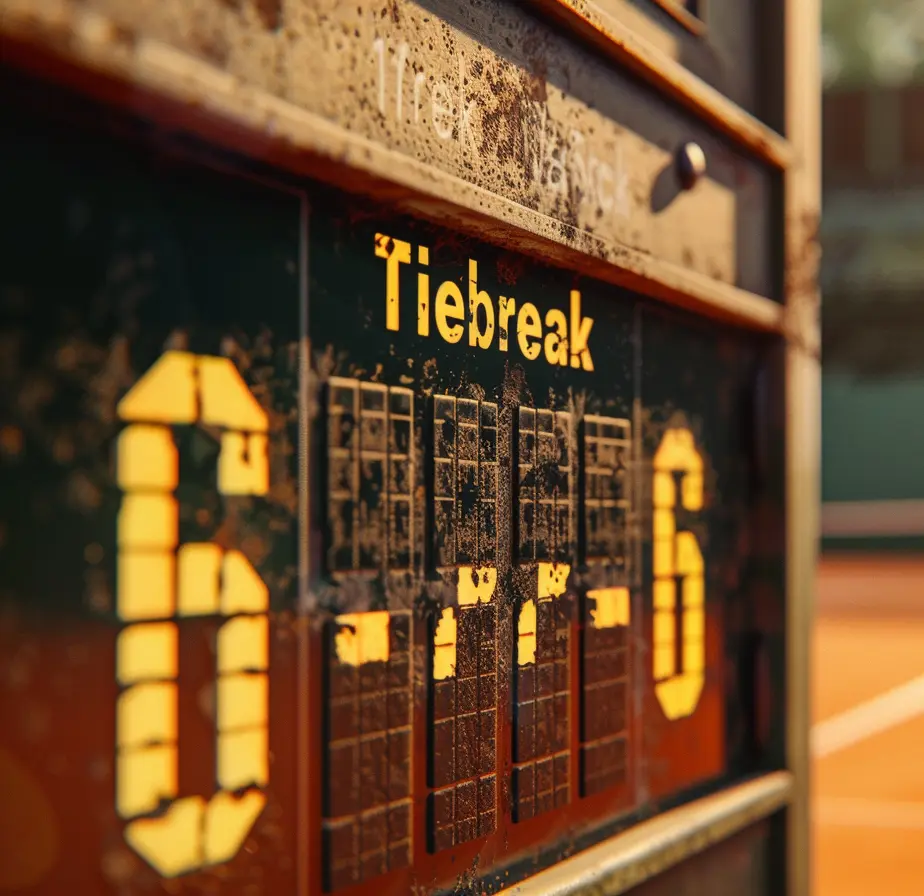
Then there’s the super tiebreak, sometimes called a match tiebreak. This format is most commonly used in doubles matches or shortened tournaments, and it replaces a full third set. The rules? First to 10 points, again with a two-point margin. It’s a fast, intense way to settle matches without wearing down players.
While not universally loved by purists, both tiebreaks and super tiebreaks have helped make tennis more viewer-friendly and manageable—especially in pro circuits with tight schedules.
Today, “he took the tiebreak 7–4” or “they closed it out in a super tiebreak” are phrases heard in every level of the game, from junior events to Grand Slams. And just like deuce or break, tiebreak has become more than a rule—it’s part of the tennis psyche.
9. Tennis Slang Explained.
Moonballs, Tweeners, and More
Beyond the official scorekeeping and structured terms, tennis has developed a rich and often hilarious vocabulary of its own. This is where creativity runs wild—on the court, in locker rooms, and across social media. From moonballs to tweeners, these expressions add color to commentary and help players describe moments that traditional language can’t quite capture.
Let’s start with the moonball. A moonball is a high, loopy shot hit with extreme topspin and height, often used to reset the point or frustrate aggressive opponents. The term comes from the ball’s arc resembling the path of a moon in the sky. Moonballers—players who rely heavily on this tactic—are often underestimated, but their consistency can drive even the most powerful hitters mad.
Then there’s the tweener, one of tennis’s most flamboyant shots. A tweener (short for between-the-legs shot) is played when a player chases down a lob and hits the ball back while running, literally swinging the racket between their legs. It’s part desperation, part showmanship—and when executed well, it brings the crowd to its feet.

Other popular slang terms include:
- Dead net: When the ball clips the net cord and barely drops over—impossible to return, and always slightly lucky.
- Jammer: A serve or shot hit directly into the opponent’s body, jamming their ability to swing properly.
- Serve-and-volleyer: A player who charges the net immediately after serving—a throwback to classic styles, now less common in modern baseline-dominated tennis.
You’ll also hear expressions like “paint the line” (for a perfectly placed shot), “shank” (a mishit that flies wildly off the frame), or “bag check” (a cheeky way of suggesting a player’s performance is so poor they should pack up and leave).
Many of these terms vary by region or player culture—Aussie slang is particularly rich, while college tennis in the U.S. has its own internal vocabulary. But in all cases, tennis slang is a language of personality. It reflects the creativity, humor, and psychology of players in a sport that can otherwise feel rigid and polite.
So whether you're watching a rally full of moonballs or catching a perfectly timed tweener, know that you're witnessing tennis speak a dialect that's constantly evolving—and always entertaining.
10. From Court to Culture.
Tennis Terms in Everyday Language
Tennis doesn’t just live between the baselines—it has quietly infiltrated business meetings, political speeches, and everyday conversations, thanks to the expressive power of its language. Over time, many tennis terms have become universal metaphors that go far beyond the sport itself.
Take the phrase game, set, match. Originally used to indicate the official end of a tennis match, it’s now widely used to suggest total and irreversible victory in any kind of contest. You might hear it in politics (“That debate performance was game, set, match”), business (“We closed the deal—game, set, match”), or even personal arguments. It signals a finish with authority and finality.
Another example is match point—the moment when a player is one point away from winning. In everyday speech, match point is used to describe a critical, high-stakes situation, especially one where everything could be decided in an instant. Headlines like “It’s match point for climate policy” or “Match point for the startup’s survival” are increasingly common.
Even the idea of a break point has been borrowed to express turning points or windows of opportunity. In negotiations or strategic decisions, people might say “We’re at break point now—this is the chance to shift momentum.”

These expressions work because the structure of tennis—with its layered scoring, momentum swings, and tension-filled points—mirrors the structure of many real-world conflicts and resolutions. Tennis metaphors communicate urgency, risk, and closure in a way that’s instantly understood.
What’s more, tennis’s refined aesthetic and global visibility have also helped spread its language through fashion, marketing, and media. Just like the tennis bracelet or the Lacoste polo (as explored in one of your previous articles), the vocabulary of tennis has become part of how we talk, write, and sell ideas.
So next time someone says “it’s game, set, match”, don’t think only of a center court showdown. Think of how deeply tennis has scored itself into our culture—not just with its rackets and rallies, but with the very words we use to define competition, pressure, and victory.
Conclusion: Listen to the Language of Tennis
From love and deuce to bagels, aces, and match points, the language of tennis isn’t just a set of scoring terms—it’s a rich tapestry of history, humor, and human expression. Each word tells a story: of noble origins, of technical innovation, or of players finding new ways to describe the emotional rollercoaster of the game.
For newcomers, these terms might sound strange at first. But for seasoned fans and players, they become second nature—a secret code that binds the global tennis community, across generations and continents.
What makes this vocabulary so fascinating is that it doesn’t stop at the edge of the court. Tennis language has migrated into everyday speech, taken root in pop culture, and even shaped how we describe conflict, strategy, and success in life beyond sport.
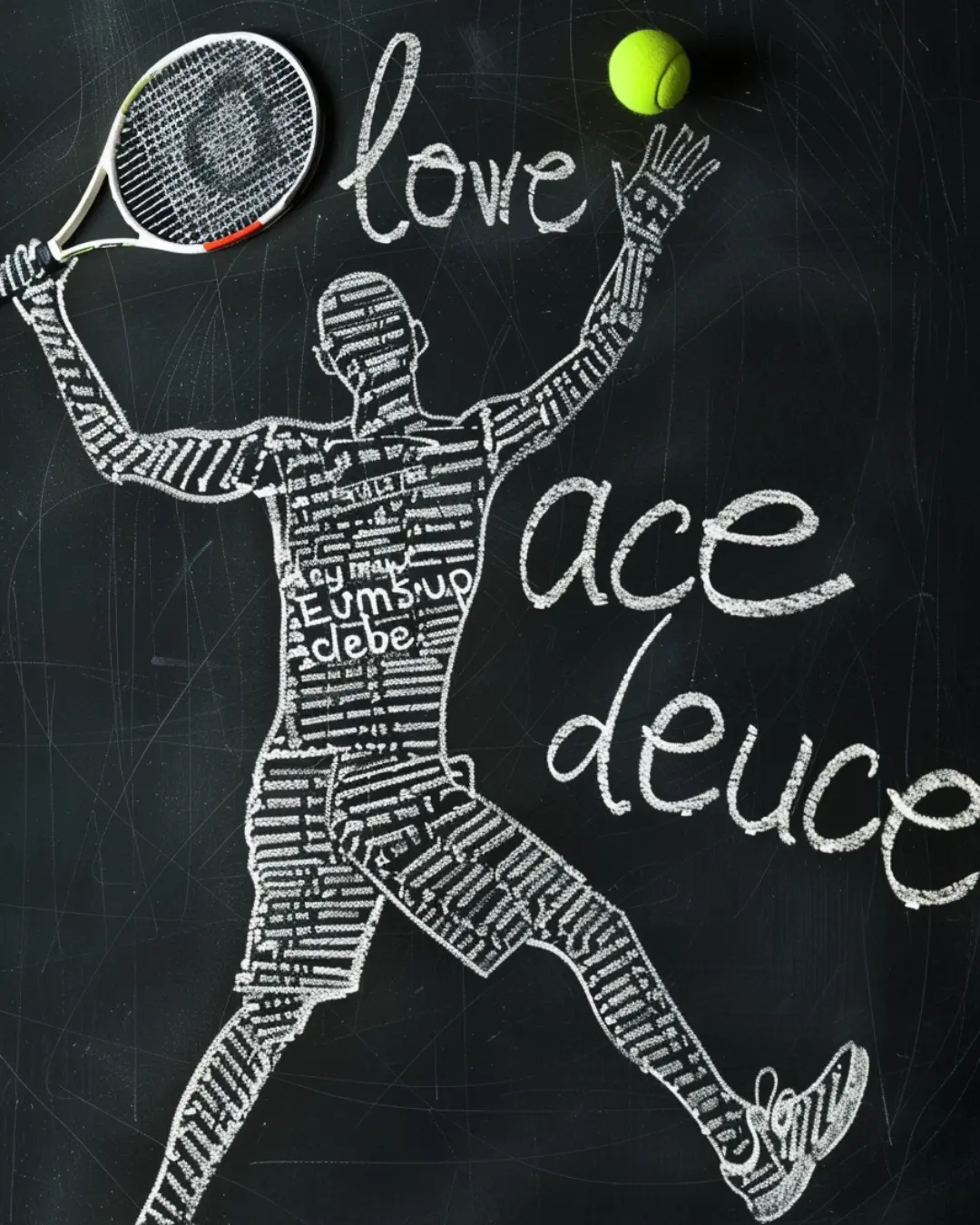
So next time you hear a commentator shout “game, set, match!” or you find yourself in a deuce situation at work or in life, take a moment to appreciate the elegance of this linguistic legacy. Tennis doesn’t just speak through rackets and rallies—it speaks through its words.
🎾 Ready to explore more tennis curiosities?
Check out our article on why clay courts are the most unique surface in tennis or discover how to prevent tennis elbow.
And if you enjoyed this deep dive into tennis terminology, feel free to share it with a fellow tennis nerd or drop us a comment with your favorite slang from your own matches!